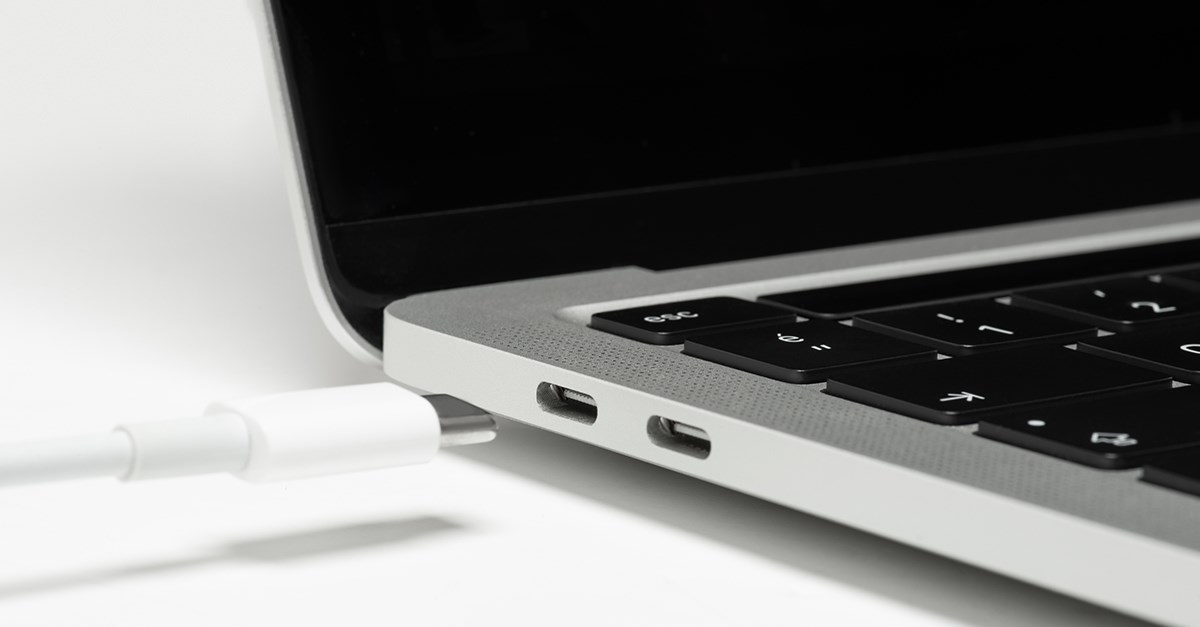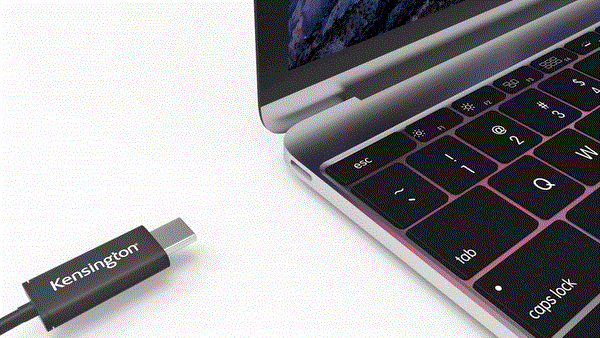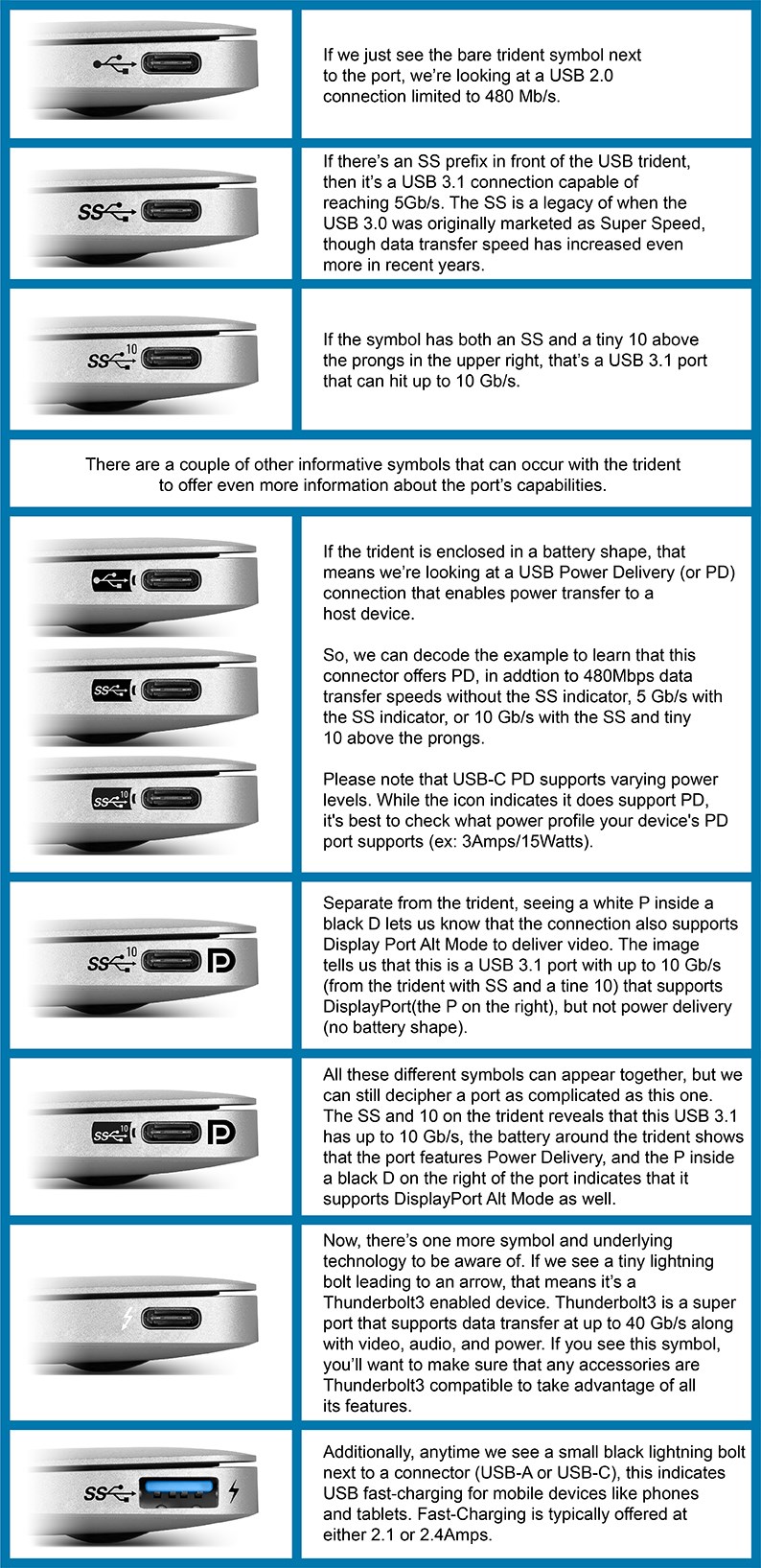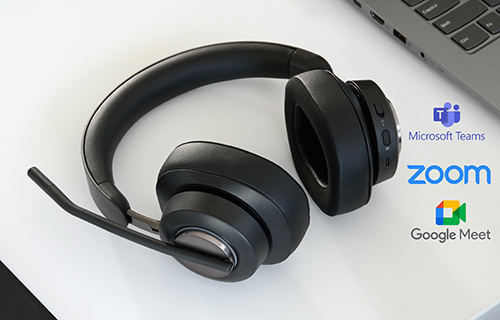
![]()
What is a USB-C symbol?
Have you ever looked closely at the USB symbol? Chances are high that you’ve come across the simple logo: a trident with prongs that end in a square, circle, and triangle. It’s thought that the three shapes signify the many devices that can be supported by a USB connection.
The first rectangular USB-A port solved a major problem by helping us link up all our peripherals with a common connector. These days the slim oval USB-C shape is fast becoming the universal standard because it offers faster data, power, and video transfer in a smaller package.

Yet, USB-C’s extra abilities have actually created a new problem for consumers. The manufacturers of those peripheral devices can deploy different underlying technologies inside the USB-C shape. So now, the multiple gadgets represented by the square, circle, and triangle in the USB symbol might have USB-C connectors that are built to do different things. Some USB-C connections will charge host devices, support video, support the mighty Thunderbolt3 technology, or only support data. If you’re confused, don’t worry—there are ways of figuring out what kind of technology lies within a USB-C connector. Kensington is here to demystify USB-C by explaining its features and teaching you how to read the various USB symbols.
One External Shape, Different Internal Tech
There’s a lot to like about the USB-C connector. To start, it’s good to know that the name USB-C describes the physical shape of the connector, not the underlying technology in a port. USB-C was designed to fit a lot of capabilities into a tiny package, eliminating the need for a drawerful of cables with different connectors. Its oval shape is thin, flat, and compact enough to be used in slimmer devices like tablets and phones as well as in larger devices like laptops. The USB-C connector is symmetrical and reversible, so it fits correctly whichever way you plug it in.

Most importantly, USB-C is a powerhouse that fits even more pins (the conduits that transfer data, power, and video) into its thin shape. But here’s the issue: not all devices use all of the pins in the same way. For more in-depth information on how pins are used, see this presentation from VESA.
It’s important to know that USB-C shape is universal (once you know what to spot, you can easily pick the oval USB-C connector out of a lineup), but the technology inside can change enormously from device to device. Some devices sport a USB-C connector with a heady combination of power delivery, data, and video transfer. Others have a USB-C port that only supports data and video, power and data, or just data alone. Even within one manufacturer’s line of products, different devices might have USB-C ports with different underlying technologies. This can be confusing if you don’t know what you’re looking for, so let’s break it down.
Get to Know Your USB-C Connector
When it comes to purchasing accessories for a device, it’s important to understand exactly what that device’s USB-C connection can support. Nobody wants to go through the excitement of unboxing a new product only to discover that it won’t work with your device. Kensington is here to help you see the method behind the madness. If you get up close to your device’s USB-C shaped port, you may notice a symbol that identifies the underlying technology and its abilities.

However, not all devices include a symbol to help you decode the technology inside—some manufacturers prefer to leave off these symbols entirely. If your device isn’t labeled (or if you just don’t have the time to decipher these hieroglyphic USB symbols), you can contact the device manufacturer or just ask Kensington directly. We strive to be the Professional’s Choice, and are here to help you take control of your desk environment, from docking stations to the ergonomic and locking accessories that promote wellness and safety.
Now that you’ve got the lay of the land, you’ll find it’s not so hard to navigate USB-C’s different functions after all.
